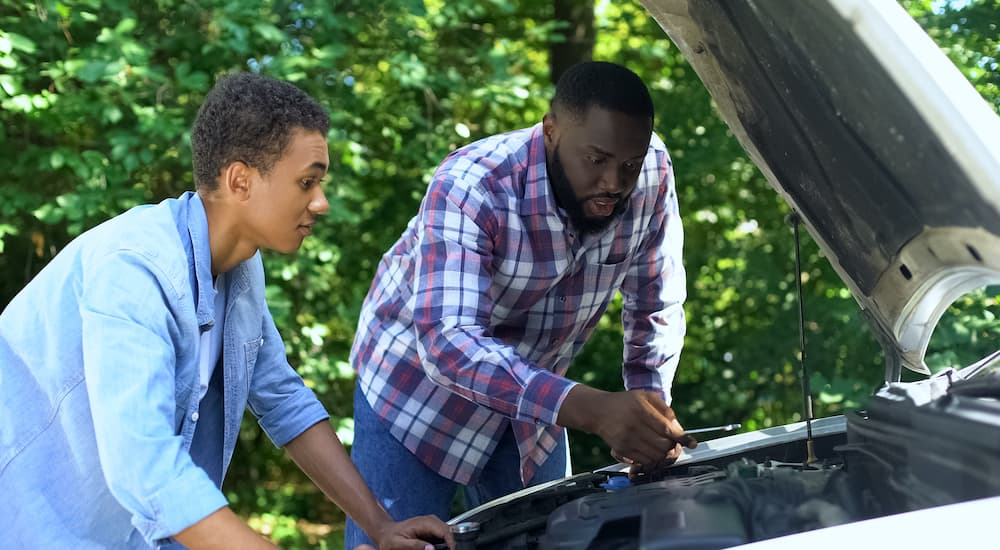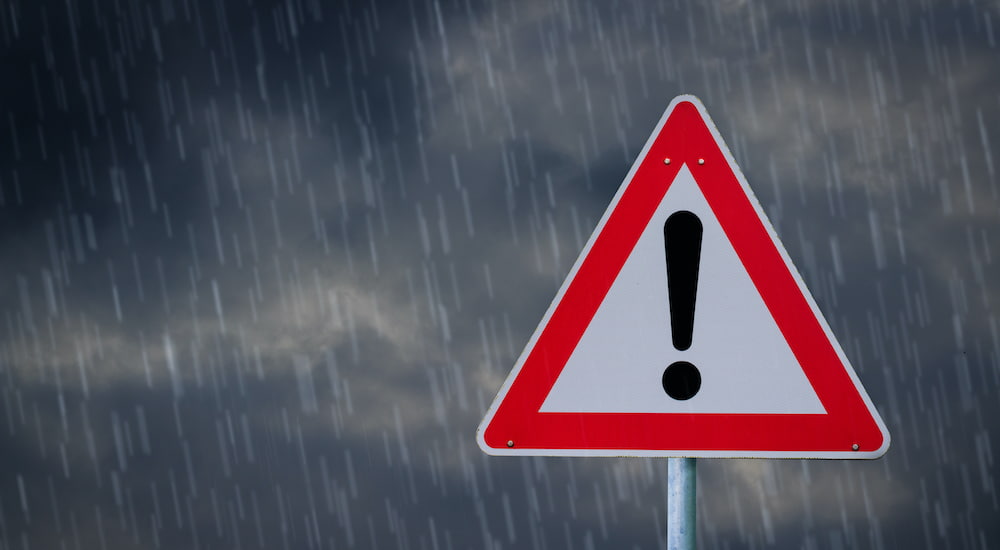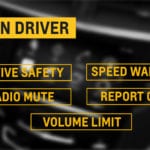Learning to drive as a teenager is exciting: the thrill and nervousness of that first time behind the wheel, the rush of newfound freedom, and discovering where you can go on your own. It can be a lot of fun––but it’s also a lot of responsibility, and that can bring some pressure and stress to the experience. If you’re a teen driver, then the last thing you probably want is another adult telling you what to think and do behind the wheel––I’m sure you have enough of that already.
Instead, what I’m going to do is share some of my thoughts with you, looking back at my own experiences behind the wheel. I’ve even asked around to get insights and thoughts from others, thinking about the advice we wish we had been told as teen drivers. We certainly can’t make you listen to us––and this isn’t guidance from a professional driving instructor, just our own views and opinions. But I think there are some things here that can make your experience behind the wheel better and make you a safer, more confident driver.
Slow Down and Learn About Speed
While I’d love to not start this off as an old man shouting, “Slow down!” to a teen driver, that’s exactly how I’m going to start this. One of the simplest things you can do to stay safe on the road is to slow down and drive within the speed limit. Going fast reduces your reaction time and makes collisions much harder to avoid––just think about any video game you’ve played where you can go really fast and how hard it becomes to avoid enemies and obstacles.
Just as importantly, learn the speed limits in your area. Not just for the written part of your driving test, but for your own wellbeing. Driving within the speed limit will help keep you safe, and if that’s not enough, it will also help you avoid a ticket for driving too fast. Trust me; you don’t want that as a teen driver––for many reasons. Some states will even confiscate your license.
Know About Curfew Hours in Your Area
Along with knowing the speed limit laws in your state and region, you should make sure you know the curfew laws too. It might seem unfair that teen drivers can’t drive after hours in some areas, but there’s not much you can do about it. You can always try to change the laws, but for now, be sure you know what the curfew is and if there are exceptions for having a job or after-school activities. Again, you don’t want to get a ticket for something you can easily avoid.
Learn the Basics of Your Car
This might seem like a “no-duh” sort of statement, but it’s really important. Take some time to look at the owner’s manual for your car––yes, it’s like studying for a test, and I’m sorry. But trust me on this: knowing about your car will let you enjoy it more. Not only will you know what it means if a light comes on on your dashboard, but you might discover things you didn’t know about your vehicle – like entertainment features or connectivity with your phone.
Get Practice in Vehicles of Different Sizes
Even two cars that look pretty similar can drive very differently based on their engines, suspension, transmission, and more. When you go from a compact sedan to a full-size SUV, you might as well be learning to drive all over again (okay, maybe it’s not quite that extreme, but you get the idea). While you’re learning or just starting out as a teen driver, find chances to get practice with vehicles of different sizes alongside an experienced driver. This will help you out in the future.
Get Practice in Bad Weather
Driving in bad conditions is challenging and can be very dangerous. When you’re first driving, get some practice with an experienced driver in bad weather. Depending on what you typically will have to face in your area, try to get practice in the rain, in snow and ice, and more. If you live somewhere that’s dry; rain can be especially dangerous since dirt on the road will become mud and be even more slippery than you expect.
Learn to Be Aware of Your Surroundings
When I was learning to drive, my father would tell me, “Another car should never sneak up on you.” As you’re driving, pay attention to what you’re doing and your vehicle, but always be aware of your surroundings. Keep glancing at your rearview and side mirrors; watch cars ahead of you on the road to see what they’re doing. You never want to be surprised by a car suddenly appearing in your side mirror––that often means you lost focus.
Don’t Get Distracted!
Speaking of focus, one of the most important things you can do as a driver is to stay focused on driving and not get distracted. That means don’t look at your phone, don’t check yourself out in the mirror, don’t eat and drink, and don’t get swept up singing along to a song you like.
Similarly, watch out for distractions outside of your vehicle: an accident or stalled car beside the road, a funny billboard, and other drivers doing something stupid can all distract you and cause you to get into a collision. Finally: focus on driving––daydreaming is the most common distraction that results in a fatal collision!
Treat Your Car Like an Extension of Yourself
As you drive, learn to feel and hear your car as it naturally runs––think of it as an extension of yourself. You notice if you get out of bed in the morning and your foot hurts because it doesn’t normally feel like that. Well, treat your car the same way. Learn what it normally sounds like, smells like, and feels like when it’s idling or driving on a smooth road. Whenever one of those things is off, that can mean that something’s wrong.
Let Your Car Follow Your Eyes
Here’s a tip from someone I talked to: when you’re driving and approaching a curve or turn, focus on the direction the car needs to move to go through it. Your hands and car will naturally follow where you look, and this will help you more easily and smoothly go through a turn. This is also a good safety point: you have a natural tendency to go where you look. So when you are looking at something to the left or right of your vehicle, you’re going to subconsciously drift in that direction. Keep this in mind and actively avoid it when you’re on the road.
Don’t Have the Biggest Car among Your Friends
Suggestions about safety and precision driving aside, consider this some free advice: don’t have the vehicle with the most seats among your friends. If you do, you’re going to end up driving everyone everywhere every time you all go out. I mean, sure, if you want to be the group chauffeur, then feel free to ignore this advice––just remember that I warned you.
Watch that Gas Tank
Always pay attention to your gas tank and never let it go empty––don’t even let it get dangerously low. Keeping your tank topped up or reasonably close to it will ensure you don’t find yourself stranded somewhere. If you live in an area that’s really cold, empty fuel lines can freeze, which can end up costing you thousands of dollars in repairs and replacements. So seriously, keep an eye on your gas tank, and don’t let it go empty.
Still With Me After All of That so Far?
Good, because I’ve got some more tips for you that you never asked for. Trust me, though: this stuff was learned the hard way by people who are happy to share, so you don’t have to suffer as they did. Learn things the easy way, that’s my best advice.
Learn Some Basic Maintenance
There’s probably a lot of stuff with maintaining your vehicle that you’ll want a professional to handle for you, but you should be able to handle basic things yourself. Simple stuff like checking your vehicle’s fluids will make your life a lot easier. Learn how to check your engine oil, your washer fluid, and the fluids in your vehicle’s power steering and transmission. This is pretty simple, and you can check them regularly to make sure you don’t discover your engine needs oil by having it overheat and leave you stranded on the side of the road.
Learn How to Change a Tire
This might sound like “basic maintenance” up above, but it’s so important that I wanted to take a moment to mention it as its own thing. Seriously, learn how to change a tire on your vehicle––not just in theory, but actually do it. There are plenty of great guides online, and videos you can watch that will show you how to do this, and take the time to go through it and practice it when you’re not stuck somewhere with a flat tire at 2 in the morning.
Learn where your spare tire is located and have the right equipment in your vehicle at all times to change a tire if needed. It’s easier than you probably think it is, and it’s one of those things that can really make your life a lot simpler when you need it. As someone who first changed a tire in the pouring rain after my friend hopped the curb and demolished one of his tires, believe me when I say that you’ll be happy you know what you’re doing when the moment presents itself.
Get a Feel for Your Car’s ABS
After typing that, I realized it sounded like I’m telling you to feel your car’s abs like some kind of shirtless Jason Mamoa. That’s not what I’m talking about (I know, I’m sorry). In this case, ABS refers to your vehicle’s Antilock Braking System, which is there to help you maintain traction on wet surfaces and prevent your vehicle from skidding. If you’ve never felt them kick in when you hit the brakes, it can be pretty jarring.
So find a nice open spot––pick a large empty parking lot, don’t do this in traffic or on a busy road––and get a feel for them. This is easiest if it’s raining or just rained, so the road surface is wet. Get a little speed going; you don’t need much, and safely hit the brakes. You’re going to feel something like a pulse or vibrating, and it’s going to be weird the first time you experience it. Try it out a few times, and you’ll get a feel for it; this way, when you have to slam on your brakes in a real emergency situation, the feel of the ABS kicking in won’t freak you out.
Adjust Your Vehicle to Fit You
Have you ever ridden with someone who goes to check a side mirror or their rearview mirror, and they have to crane their neck in weird ways or really twist to get a good look at it? Don’t be that person. When you get into your vehicle to drive, adjust your seat so you can easily and safely reach the steering wheel and pedals. Adjust the wheel if you need to, and adjust your mirrors, so they give you a clear view of the area behind your vehicle.
Wear Glasses? Get the Anti-Glare Coating
This might seem a little silly, but trust me: it will make your life a lot easier. Driving at night without the anti-glare coating can be brutal as every vehicle on the road seems designed to blind you and leave you unable to see. Yes, it’s a little more expensive, but it will make your life simpler and can save you money by helping you avoid a collision.
Buy Something Practical That You Still Like
When you’re shopping for your first vehicle, you want something that’s practical for where you live and where you’ll drive, but it should also be a car you like. If you drive on many dirt roads or have snow and ice in your area, then a sports car is really not a good idea. Similarly, a large SUV can be a tough first vehicle due to its size. So shop practical but remember: you’re going to have it for quite a few years, so you should still have fun when driving it.
Learn to Drive at a Steady Speed
This is one of those things that parents won’t always teach you because it’s so obvious but so vitally important. As you’re learning to drive, and even once you have your license, put some effort into learning to keep your vehicle under control at a steady speed. Don’t use cruise control or anything like that – get to a safe, legal speed, and keep your vehicle there (traffic allowing, of course). You want this kind of control to become second nature to you, so you’ll automatically keep your car at a steady speed when you’re behind the wheel.
The Speed Limit Is the Ceiling, Not the Floor
Speaking of speed, the speed limit is exactly what it’s called: a limit! If you’re in an area with a speed limit of 35 mph, that doesn’t mean you have to go at least 35 mph; it means you should not go faster than 35 mph. The speed limit is the fastest you’re legally allowed to go, not the minimum speed that you’re supposed to drive. While you shouldn’t go so slowly that you obstruct traffic, you’re allowed to safely drive slower than the speed limit.
Leave Distance Between Yourself and the Car Ahead of You
This is really simple, and I’m quite certain you’ve already been told it, but I’m going to repeat it because it’s just so important. Leave yourself enough space between your vehicle and the one in front of you to be able to stop safely. Furthermore, you need to understand that this distance is a lot larger than you think, particularly on the freeway and when traveling at high speeds. Bad weather just makes stopping even harder, so it all adds up to needing plenty of space between vehicles on the road.
Slow Down in Bad Weather
I know I already told you to slow down once, but seriously go slower in bad weather. Rain, snow, sleet, ice, and even dust can all increase the distance you need to stop when you hit the brakes. Bad weather also reduces your visibility – so when you combine those things, it really makes it difficult to see something happening in front of you and stop in time when needed. Slow down to give yourself more reaction time and stay safer on the road.
Your Car Is Considered a Weapon
One final piece of advice: when you’re behind the wheel, you’re controlling about 3,000 lbs (more or less) of machinery, with enough power in it to absolutely destroy a person in a collision. For this reason, your vehicle can legally be viewed as a weapon––when you’re driving; you’re in control of a potentially deadly weapon. Don’t be afraid of that––I’m not trying to freak you out––but you need to respect the responsibility that you have.
This means that if a kid runs out into the street and you’re going too fast and slam into him, you’re going to be accountable for the vehicle you’re in control of. You can be arrested for hitting someone with your vehicle; you can go to prison for years for harming or killing someone with your vehicle. Again, don’t be freaked out by this: just think carefully about your actions behind the wheel.
That’s All for Now Zoomer
This unsolicited advice has been provided by the We-Told-You-So Organization and the National Association of Back-in-my-Day! Driving can be a lot of fun, but please remember to stay safe and be responsible behind the wheel.








